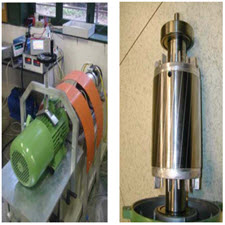بایگانی برچسب برای: fault diagnosis

Diagnosis of Induction Machines’ Rotor Faults in Time-Varying Conditions
اطلاع رسانیMotor current signature analysis is the reference method for the diagnosis of induction machines’ rotor faults; however, in time-varying conditions, it fails as slip and speed vary, and, thus, sideband components are spread in a bandwidth that is proportional to the variation. Variable speed drive applications are common in the aerospace, appliance, railway, and automotive industries and also in electric generators for wind turbines. In this paper, a simple and effective method is presented that allows the diagnosis of rotor faults for induction machine drives in timevarying conditions. It is tailored to direct rotor flux fieldoriented controlled drives, where the control system provides suitable signals that are exploited for the demodulation to a constant frequency of time-varying signatures related to the rotor faults. Simulations and experiments are reported to validate the proposed method on a critical speed transient.
![An SVM-Based Solution for Fault Detection in Wind Turbines[taliem.ir]](https://taliem.ir/wp-content/uploads/An-SVM-Based-Solution-for-Fault-Detection-in-Wind-Turbinestaliem.ir_.jpg)
An SVM-Based Solution for Fault Detection in Wind Turbines
اطلاع رسانیResearch into fault diagnosis in machines with a wide range of variable loads and speeds, such as wind turbines, is of great industrial interest. Analysis of the power signals emitted by wind turbines for the diagnosis of mechanical faults in their mechanical transmission chain is insufficient. A successful diagnosis requires the inclusion of accelerometers to evaluate vibrations. This work presents a multi-sensory system for fault diagnosis in wind turbines, combined with a data-mining solution for the classification of the operational state of the turbine. The selected sensors are accelerometers, in which vibration signals are processed using angular resampling techniques and electrical, torque and speed measurements. Support vector machines (SVMs) are selected for the classification task, including two traditional and two promising new kernels. This multi-sensory system has been validated on a test-bed that simulates the real conditions of wind turbines with two fault typologies: misalignment and imbalance. Comparison of SVM performance with the results of artificial neural networks (ANNs) shows that linear kernel SVM outperforms other kernels and ANNs in terms of accuracy, training and tuning times. The suitability and superior performance of linear SVM is also experimentally analyzed, to conclude that this data acquisition technique generates linearly separable datasets.

